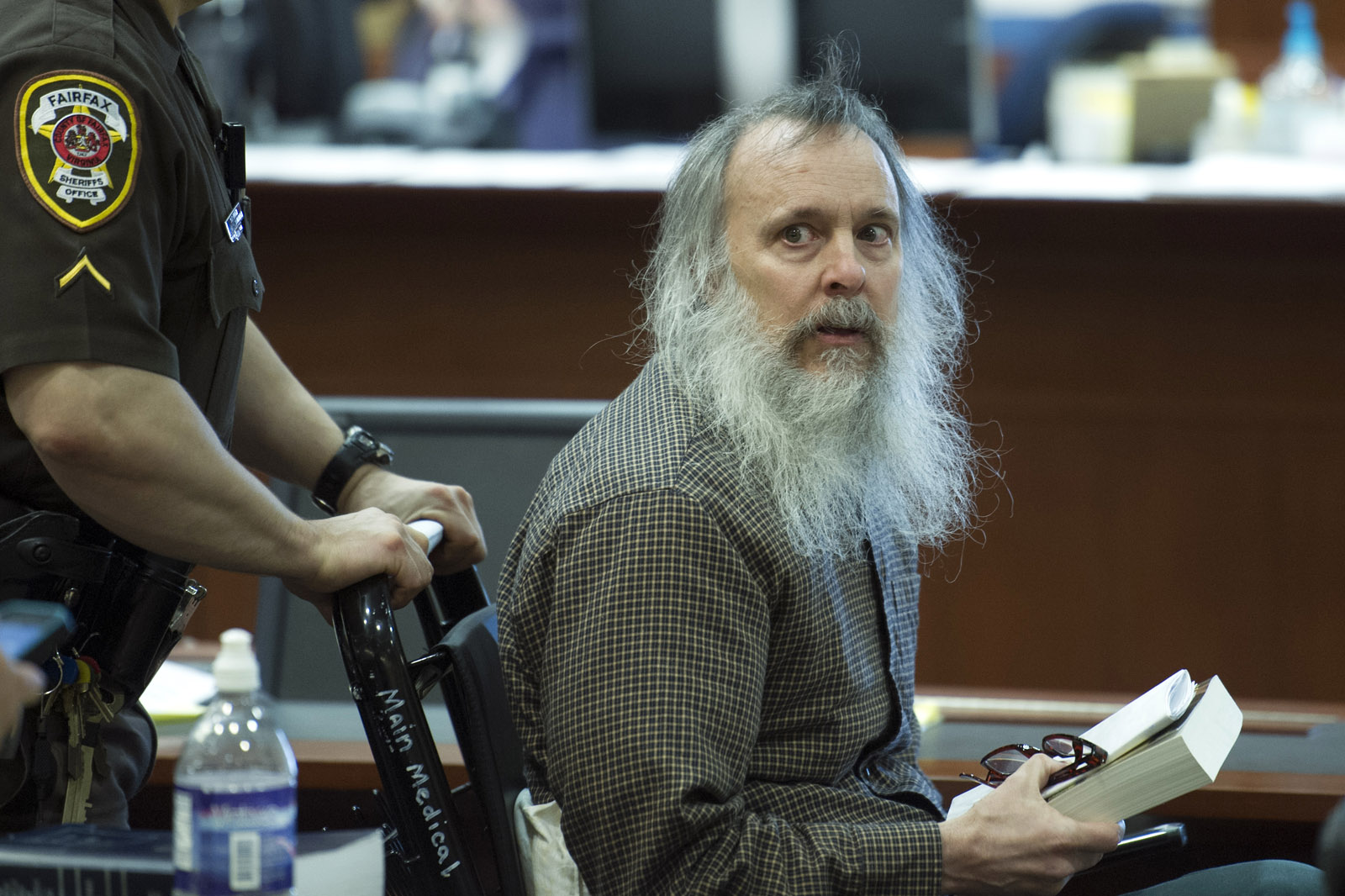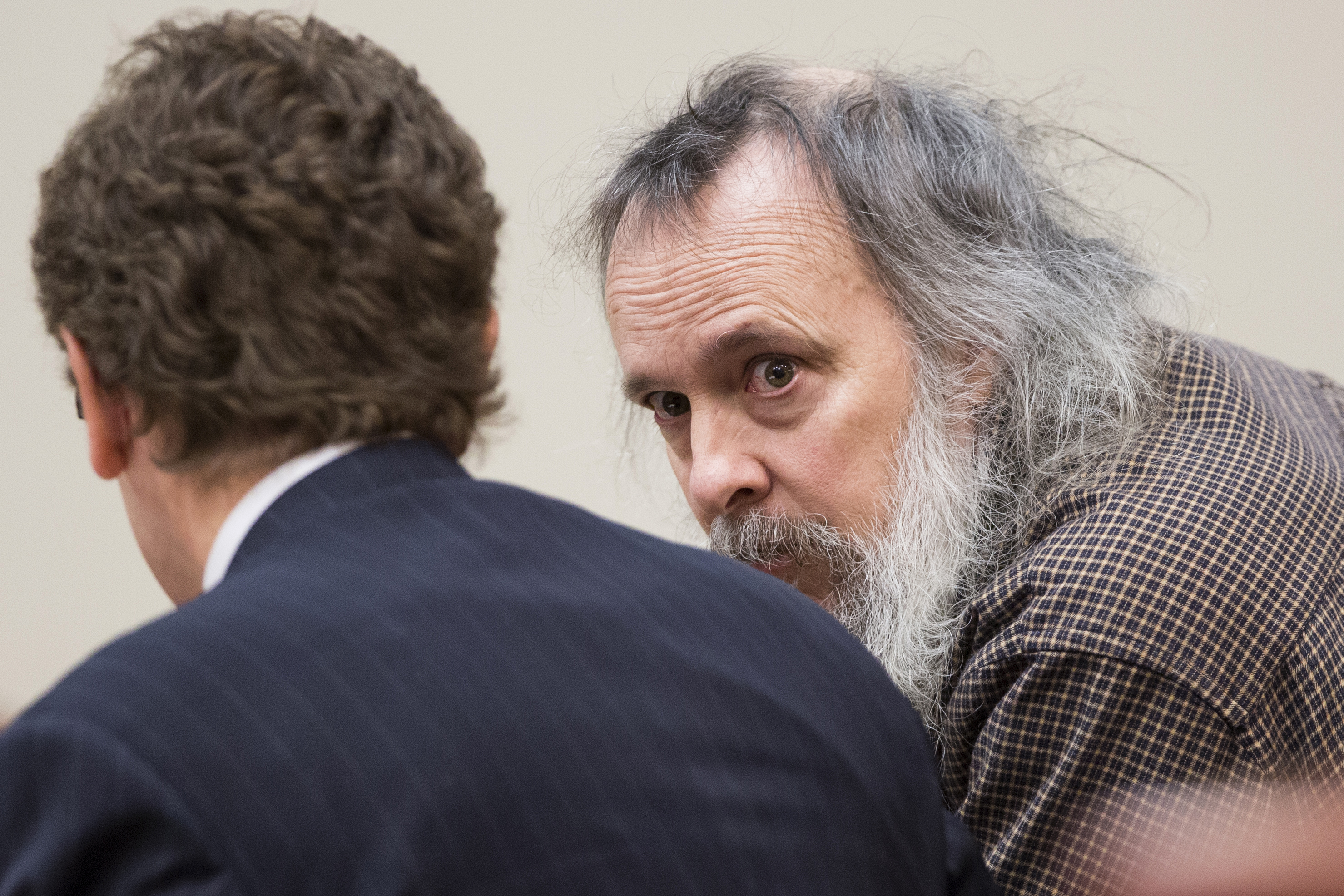FAIRFAX, Va. – Charles Severance’s writings featured prominently on the final day of testimony in his trial for the murders of three Alexandria residents.
His defense team tried to inject a sense of normalcy onto the writings, which prosecutors say lay out the motivation for the killings and portray a man bent on revenge and who glorified violence.
Instead, Severance’s defense team argued that his writings were scholarly, included biblical, historical and literary references, and served as brainstorming for games he created.
Severance is charged with the murders of Nancy Dunning, Ron Kirby and Ruthanne Lodato, who each had deep ties to the community. All three were killed at the front doors of their Alexandria homes and were killed by the same type of .22-caliber bullets.
Among the writings read in court Tuesday were letters to his son, musings, applications, term papers, and even a candidate questionnaire.
According to the writings, Severance applied for a Fulbright Scholarship. He took an online education course on English common law. He spent a lot of time in Cumberland, Maryland. He crafted rules and concepts for card, dice and chess games. He wrote lists of words and word associations. Many of his writings revolved around historical places, ideas and people.
Sarah Burke, an investigator for the defense, read quickly — hopping from snippet to snippet.
One letter to his son Levite began sweetly. He talks about the squirrels and the smell of the flowers, but the letter quickly devolves into a rant against the government, calling officials “demon-possessed pigs.”
In another letter to his son, Severance wishes him a happy birthday and talks about meeting a Virginia State Trooper in court. He ends the letter with “I am a Cavalier.”
On a candidate survey for the League of Women Voters, Severance wrote that he was the principal investigator for MentalDisorder.com, his website, and that he could lead a team of eradication experts.
He also sought a press pass for The Pentagon.
Various writings refer to the English Civil War, the Royal Proclamation of 1763, and conflicts between frontier settlers and Native American tribes.
Jurors also got another look at the surveillance video taken at the Potomac Yards Target the day Nancy Dunning was killed. Police say that Severance followed her around the store and as she exited. But members of Severance’s family testified last week however that it was not their “Charlie” in that video.
During their rebuttal, prosecutors tried to reject the defense’s suggestion that another man with a white beard was responsible for the crimes, or that the man witnesses had seen near the Lodato home in 2014 was a homeless man.
A receptionist for a church on nearby West Braddock Road said that the First Assembly of God does not provide services to the homeless.
And an FBI agent testified that Severance’s sister recognized her brother as the man depicted in a sketch released by Alexandria police after Lodato’s murder. Sophie Grasmeder told Jeffrey Johannes that the sketch resembled how her brother appeared at Christmas 2013 — about a month before Lodato was shot.
The defense had persistently questioned past witnesses about the size of the beard on the man in the sketch, which is shorter and cleaner cut than Severance’s long, broad beard. They also questioned the state and size of the beard on the man witnesses saw in the neighborhood.
Burke also provided a detailed itinerary for jurors describing his movements and even where he slept in the four days leading up to his arrest in Wheeling, West Virginia.
One of his last acts before police found him in a public library was to respond to a Craigslist ad about an apartment. Severance wrote that he needed the unit for about a month and asked to see it that same day.
Defense attorneys say that Severance didn’t flee as police began to investigate his possible involvement in Lodato’s death. He simply went to visit a friend and to conduct more historical research after he was kicked out of his girlfriend’s house.
Throughout the trial, Severance has quietly stared straight ahead, not looking at witnesses, including his own family. But he spoke out several times Tuesday.
When asked if he had been advised of his right not to testify, Severance paused and then commented on the origins of the Fifth Amendment, which grants Americans protection from testifying if they would incriminate themselves.
However, he did not answer Judge Bellow’s questions and ultimately did not take the stand in his own defense.
Later in the day, he asked to have a copy of the jury instructions that lawyers submitted to Bellows.
The jury will likely hear those instructions sometime Wednesday afternoon. Closing arguments are set to begin in the morning.
Prosecutors will argue that Severance had motive, that all three crimes had unique similarities, and that the ballistic evidence ties him to the murders.
The defense will say that circumstantial evidence strings the case together, eye witness testimony is not reliable, and that no forensic evidence places Severance at any of the crime scenes.






